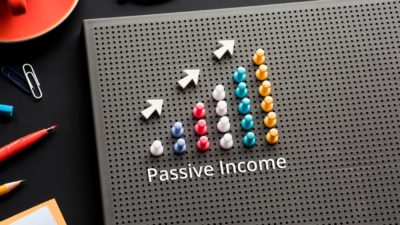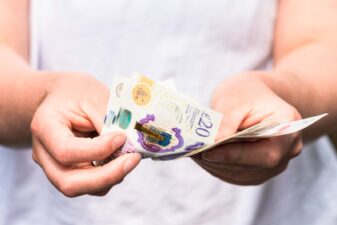A Motley Fool reader has asked us about reinvesting dividends. If you invest large sums and receive substantial dividend payments, it’s straightforward to buy shares with it. But it’s not cost-effective to pay brokers’ fees for buying small amounts. One way to overcome that is to opt for scrip dividends. Rather than paying you cash, the company issues you new shares instead.
But what if your dividend payments amount to just a few pounds? If you invest £1,000 in Unilever, say, the forecast 3.2% dividend yield suggests you’ll earn £32 this year. With Unilever shares currently changing hands for a shade under £48, you can’t even buy a single share with that.
Cash or shares
It’s common for a company to pay you in cash if there isn’t enough for one share. Or if you’d get a fractional number of shares, they’ll round it down and pay you the extra as cash. But some companies are especially helpful and will do better than that. I have, for example, a scrip dividend note here from HSBC belonging to a friend of mine. They hold surplus cash and carry it over to the next quarter. So, for example, this time he had money brought forward from last time, which meant there was enough for some new shares. The remainder is carried forward to next time.
Passive income stocks: our picks
Do you like the idea of dividend income?
The prospect of investing in a company just once, then sitting back and watching as it potentially pays a dividend out over and over?
If you’re excited by the thought of regular passive income payments, as well as the potential for significant growth on your initial investment…
Then we think you’ll want to see this report inside Motley Fool Share Advisor — ‘5 Essential Stocks For Passive Income Seekers’.
What’s more, today we’re giving away one of these stock picks, absolutely free!
How can you work out what you might get? It depends on the dividend cash and the share price. If you have, say, £1,000 in a stock and it pays a 5% dividend, you’ll receive £50. And if the share price is just a few pounds or less, you’ll then be able to reinvest almost all the cash in scrip dividends.
FTSE 100 dividends
I’ve calculated it for the whole of the FTSE 100, using a snapshot of share prices from last week and using forecast dividend yields from various sources. I used forecasts for as far out as I could, so either 2021 or 2022 based on year-end. The idea is to try to look past the Covid-19 cuts to a lot of dividends this year. In terms of number of shares you’ll get, on £1,000 invested, these are the top 10 (with the number of scrip shares rounded down):
| Company | Share price (p) | F’cast yield | Div cash (£) | Scrip shares |
| Lloyds | 29p | 5.9% | £59 | 203 |
| Vodafone | 111p | 8.0% | £80 | 72 |
| BT Group | 108p | 7.6% | £76 | 70 |
| Taylor Wimpey | 121p | 7.1% | £71 | 58 |
| Legal & General | 199p | 9.6% | £96 | 48 |
| Barclays | 108p | 5.1% | £51 | 47 |
| NatWest Group | 114p | 4.5% | £45 | 39 |
| BP | 225p | 8.6% | £86 | 38 |
| Glencore | 174p | 5.7% | £57 | 32 |
| M&G | 168p | 5.0% | £50 | 29 |
This is for full-year dividends, and most will be paid in instalments – usually twice per year, sometimes quarterly. You’ll need to bear that in mind, and how the dividend is split between instalments, to determine what you’ll get per purchase.
Which to choose?
The number of shares you get should really not be a big determining factor in your investment decisions. But it is interesting to see which stocks will get you the most. Naturally, it’s ones with a combination of high yield and low share price. As it happens, these 10 have all been hammered in the stock market crash. Five of them are out-of-favour financials, three banks.
Is the forecast number of scrip dividend shares a useful indicator of underpriced stocks? Or does it show up dead dogs still on their way down? I’ll leave that one as an exercise for the reader.






